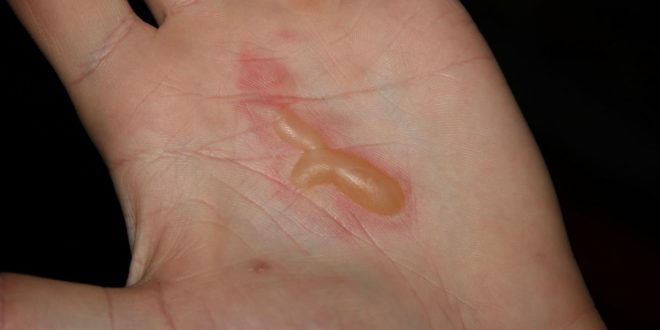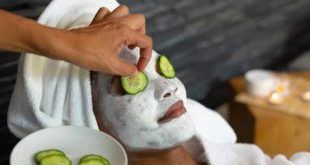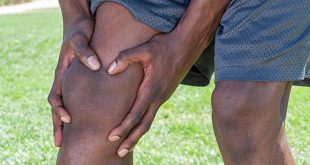While they may seem like simple skin irritations, the formation of blisters is a complex physiological response involving the intricate interplay of skin layers, friction, and protective mechanisms.
In this article, we dive deep into the science behind how blisters are formed, shedding light on the biological processes that underlie their emergence.
Blisters form in response to external stimuli, primarily friction, but also heat irritation, and other forces. Here’s a breakdown of how this process unfolds:
Friction-induced blisters
- When two surfaces rub against each other, such as shoes against the skin, the friction generates shear forces that separate the layers of the skin.
- The separation occurs between the epidermis and the underlying dermis, creating a gap where fluid accumulates.
- The body’s natural response is to protect the vulnerable area by filling the gap with a clear fluid called serum or plasma. This fluid cushions the layers and prevents further damage.
- The accumulation of fluid creates a visible blister on the skin’s surface.
Heat-induced blisters
- Burns caused by excessive heat, whether from scalding liquids or sunburn, damage the skin cells.
- The body’s response is to release inflammatory mediators and increase blood flow to the area to promote healing.
- As part of this response, serum and immune cells gather around the damaged area, resulting in blister formation.
Irritation and allergies
- Certain chemicals or allergens can irritate the skin, prompting an inflammatory response.
- The body may generate blisters as a defense mechanism to isolate the irritants and prevent further harm.
How to handle blisters easily
Keep it Clean
Before attempting any treatment, ensure that the affected area is clean and free from dirt and bacteria.
Gently wash the blister and surrounding skin with mild soap and water, then pat it dry with a clean, soft towel.
Protect with a Bandage
Covering the blister with a clean, sterile bandage helps prevent infection and reduces friction.
Opt for adhesive bandages or non-stick sterile gauze pads that won’t further irritate the blister.
Avoid Popping
Resist the urge to pop the blister, as this can increase the risk of infection and delay healing.
If the blister is large, painful, or likely to rupture, it’s best to consult a healthcare professional for safe drainage.
Use Moleskin or Gel Pads
For blisters caused by friction (e.g., from ill-fitting shoes), moleskin or gel pads can provide cushioning and alleviate pressure on the affected area. These protective products are available at most drugstores.
Apply Antibiotic Ointment
After cleaning the blister, applying a thin layer of over-the-counter antibiotic ointment can help prevent infection. Be sure to follow the product’s instructions.
Allow for Air and Rest
Whenever possible, let the blister breathe by leaving it uncovered. Avoid activities that cause friction or pressure on the blistered area, as this can worsen the condition.
Elevate If Necessary
If the blister is in an area prone to swelling, such as the foot or ankle, elevating the affected limb can help reduce swelling and relieve discomfort.
Watch for Signs of Infection
Keep a close eye on the blister for signs of infection, such as increased redness, warmth, pus, or worsening pain. If any of these symptoms occur, seek medical attention promptly.
Stay Hydrated and Nourished
Drinking plenty of water and consuming a balanced diet rich in vitamins and minerals can aid the body’s natural healing process.
 Top Naija News – Nigeria News, Nigerian News & Top Stories Top Naija News – Nigerian Newspapers, Nigerian News. topnaijanews is a daily Nigerian newspaper covering Latest News, Breaking News, Entertainment, Sports, Lifestyle and Politics.
Top Naija News – Nigeria News, Nigerian News & Top Stories Top Naija News – Nigerian Newspapers, Nigerian News. topnaijanews is a daily Nigerian newspaper covering Latest News, Breaking News, Entertainment, Sports, Lifestyle and Politics.




